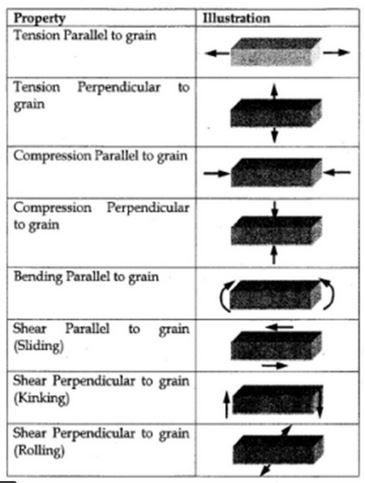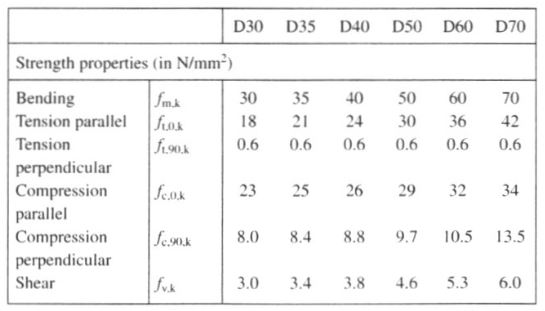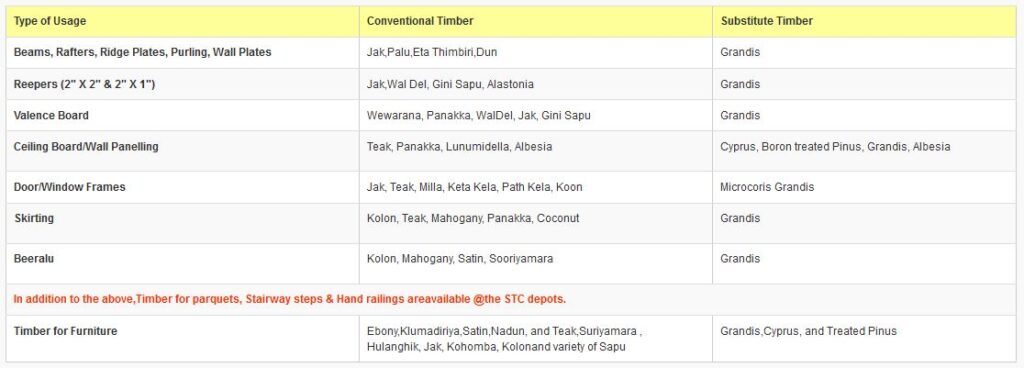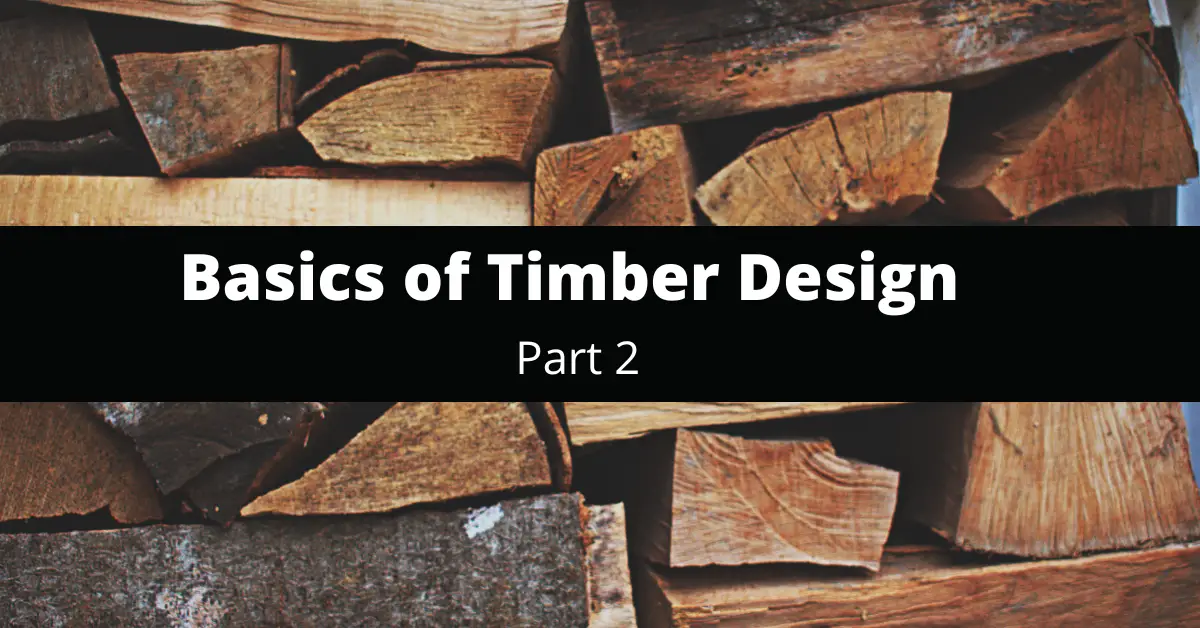Let’s continue with timber design.
Table of Contents
Mechanical properties that are considered in timber design
- Bending
- Tension parallel to grain
- Tension perpendicular to grain
- Compression parallel to grain
- Compression perpendicular to grain
- Shear parallel to grain
- Young’s modulus parallel to grain
- Young’s modulus perpendicular to grain
- Hardness

Member axes
As depicted in the diagram below, member properties are referred to by the principal axes. The x-x axis runs parallel to the length of the member in the direction of the grain; the y-y and z-z axes are the primary and secondary bending axes, respectively.

Size effect
When the volume of wood subjected to stress is increased, its strength is decreased. The phenomenon is known as the size effect and is sometimes described as being stochastic in the sense that the probability of weak spots appearing in wood increases as its volume increases.
Variation of the strength properties of timber with size

The reasons for the difference in the two results are the increase in defects with the size, such as
- Knots
- Splits
- Distorted grain (slope, spiral, etc.)
- Weak zones (degraded)
Solid Timber
Sawn or planed timber may be delivered. Sawn timber is typically more cost-effective than planed timber because it requires less machining and produces less waste. However, sawn timber has a rough surface, so planed timber is typically preferable when the finished product will be visible.

- Refer page 43 and 44 of Structural Elements Design Manual Working with Eurocodes for target cross section sizes commonly available for sawn and planed timber respectively.
In the table below, wood cross-section dimension tolerances are displayed. Sawn timber must conform to tolerance class T1, whereas planed timber must conform to tolerance class T2.

Sizes are specified at 20% mc (moisture content). Dimensions change slightly as mc changes. But Eurocode 5 recommends that it is not necessary to account for these changes in design.
Grading of Timber
Pieces of timber are first stress graded, either visually or by machine. This process is called “stress grading.” There are basically two types.
- Visual grading
Visual grading, performed by skilled graders, evaluates the size and frequency of various physical defects, including as knots, grain slope, growth rate, wane, resin pockets, and distortion.
- Machine grading
Machine grading assesses the bending stiffness of each piece of wood by passing it through a set of rollers and measuring the force necessary to flex the piece by a predetermined amount.
Timber Strength Classes
To efficiently design any structural component, it is vital to have prior knowledge of the material’s characteristics. As far as we can tell, we have no influence over the quality of the wood, which poses a dilemma. In order to overcome this challenge, pieces of natural wood are evaluated and assigned a strength class that shows their properties.


Properties of timber
- Orthotropic / Non isotropic
The properties of materials differ along three mutually perpendicular axes: longitudinal (L), radial (R), and tangential (T). Because of the arrangement of its fibres and the orientation of the microfibrils (fiber-like strands) in the cell walls, the characteristics of wood are highly impacted by direction.
- Anisotropic
When treated to the same stimuli, a material’s properties vary depending on its orientation, despite the fact that the stimuli are same. The timber is stronger along the grain than across it.
- Hygroscopic
It transfers moisture with its environment, and its characteristics vary greatly with its moisture content.
How to select timber for your requirement

Please keep in mind that these are the wood varieties available in Sri Lanka, as listed on the State Timber Corporation’s website.
For relevant scientific names, refer here.
Read Also: Basics of Timber Design – Part 1











